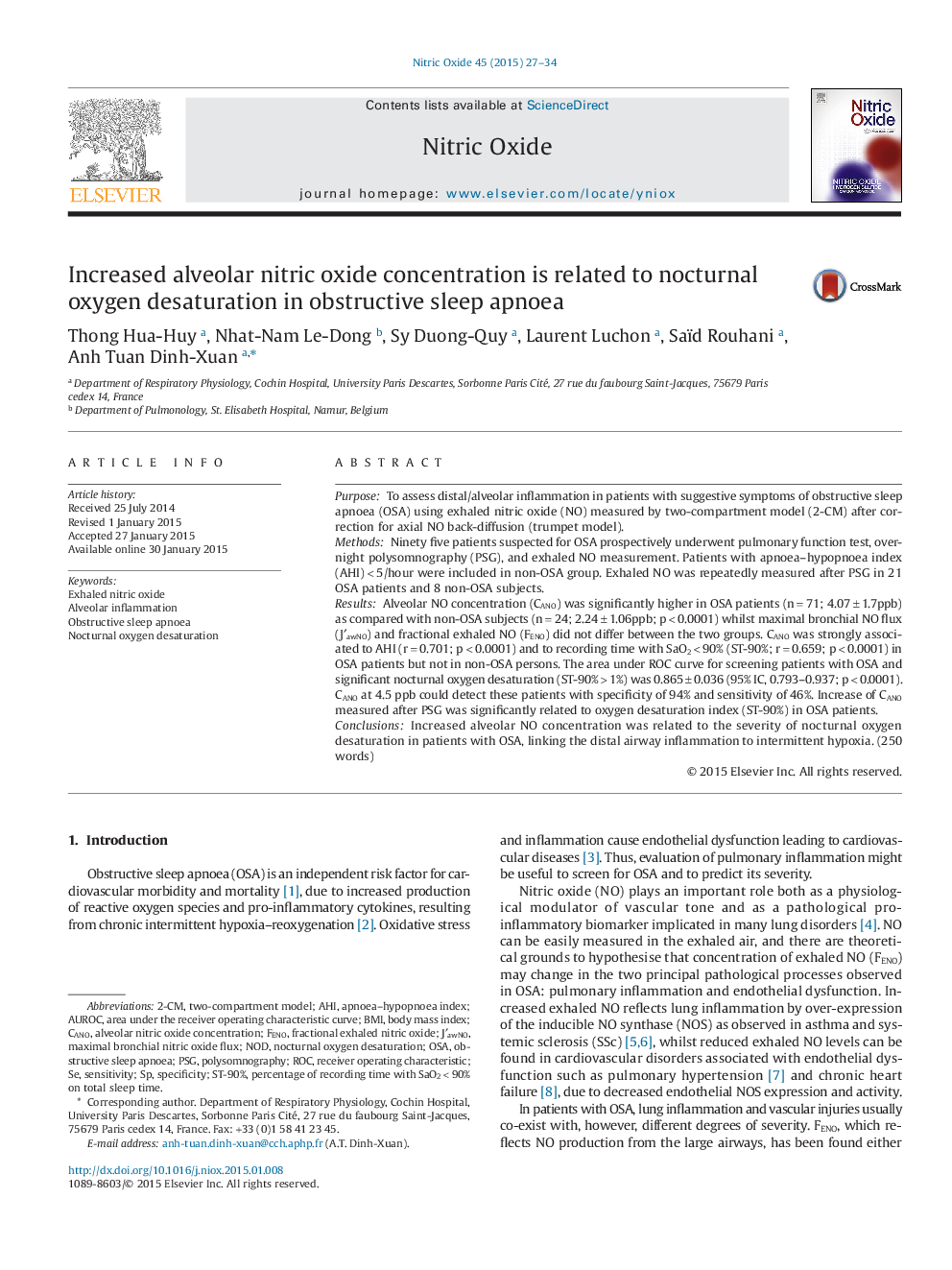| Article ID | Journal | Published Year | Pages | File Type |
|---|---|---|---|---|
| 2000492 | Nitric Oxide | 2015 | 8 Pages |
•Alveolar exhaled nitric oxide (CANO) was increased in patients with OSA.•Increased CANO was correlated to apnoea–hypopnoea index and nocturnal desaturation.•CANO > 4.5 ppb could detect OSA patients with significant nocturnal desaturation.•These clinical findings link distal airway inflammation to intermittent hypoxia.
PurposeTo assess distal/alveolar inflammation in patients with suggestive symptoms of obstructive sleep apnoea (OSA) using exhaled nitric oxide (NO) measured by two-compartment model (2-CM) after correction for axial NO back-diffusion (trumpet model).MethodsNinety five patients suspected for OSA prospectively underwent pulmonary function test, overnight polysomnography (PSG), and exhaled NO measurement. Patients with apnoea–hypopnoea index (AHI) < 5/hour were included in non-OSA group. Exhaled NO was repeatedly measured after PSG in 21 OSA patients and 8 non-OSA subjects.ResultsAlveolar NO concentration (CANO) was significantly higher in OSA patients (n = 71; 4.07 ± 1.7ppb) as compared with non-OSA subjects (n = 24; 2.24 ± 1.06ppb; p < 0.0001) whilst maximal bronchial NO flux (J′awNO) and fractional exhaled NO (FENO) did not differ between the two groups. CANO was strongly associated to AHI (r = 0.701; p < 0.0001) and to recording time with SaO2 < 90% (ST-90%; r = 0.659; p < 0.0001) in OSA patients but not in non-OSA persons. The area under ROC curve for screening patients with OSA and significant nocturnal oxygen desaturation (ST-90% > 1%) was 0.865 ± 0.036 (95% IC, 0.793–0.937; p < 0.0001). CANO at 4.5 ppb could detect these patients with specificity of 94% and sensitivity of 46%. Increase of CANO measured after PSG was significantly related to oxygen desaturation index (ST-90%) in OSA patients.ConclusionsIncreased alveolar NO concentration was related to the severity of nocturnal oxygen desaturation in patients with OSA, linking the distal airway inflammation to intermittent hypoxia. (250 words)
